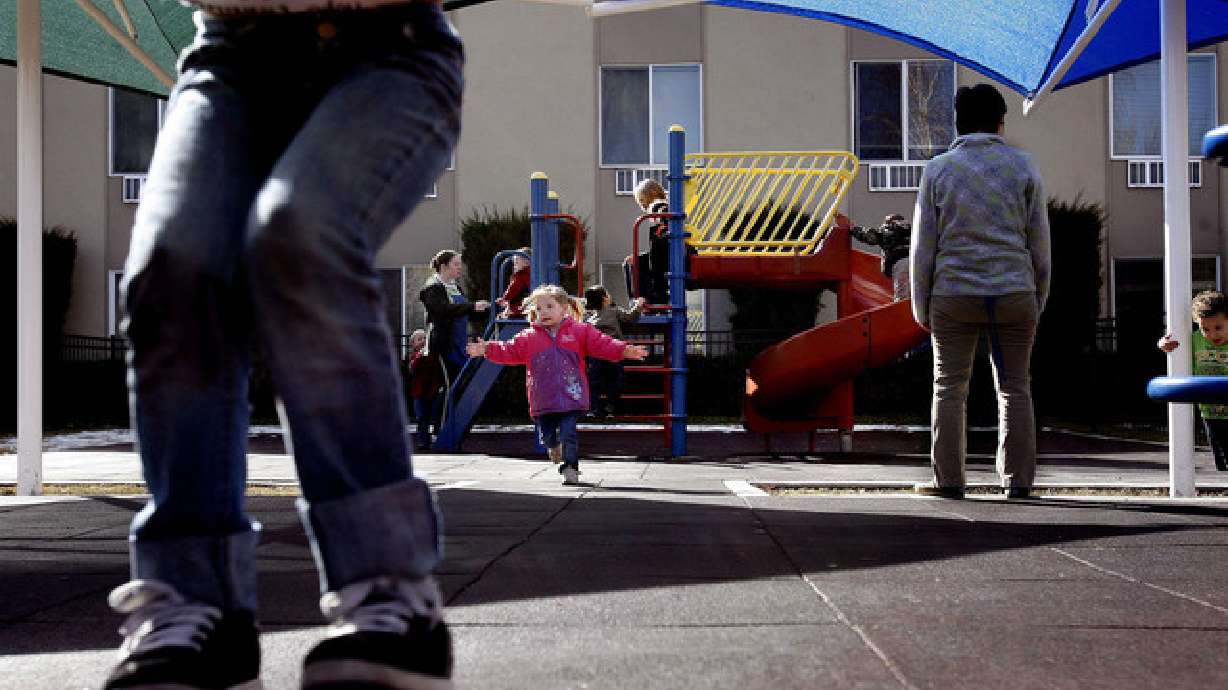Estimated read time: 2-3 minutes
This archived news story is available only for your personal, non-commercial use. Information in the story may be outdated or superseded by additional information. Reading or replaying the story in its archived form does not constitute a republication of the story.
SALT LAKE CITY — A mother's educational attainment can hold the key to ending the cycle of generational welfare, a new study reveals.
"The most important correlation between generational or intergenerational poverty is the mother's educational attainment," Kristen Cox, executive director of the Utah Department of Workforce Services, told a legislative committee Wednesday.
The department, along with the University of Utah's Social Research Institute, made that determination after reviewing state public assistance records going back to 1982.
Researchers determined that 34 percent of people ages 21 to 39 who presently receive public assistance in Utah were on public assistance as children, Cox told the Utah Legislature's Workforce Services and Community and Economic Development Interim Committee.
If the mother can get a high school diploma, at least, or a GED, at least, the likelihood that her kids will move into intergenerational poverty is diminished. It had the highest correlative value that we could see.
–Kristen Cox, Utah Department of Workforce Services
Moreover, 47 percent of adults on Temporary Assistance for Needy Families or TANF were on TANF as kids, said Cox. People who receive TANF assistance are among the state's poorest, she said.
"You definitely see some repetition between people who were on public assistance as kids," Cox said.
Intergenerational poverty is generally defined as two or more generations living in poverty, said Mary Beth Vogel-Ferguson, research assistant professor in the U.'s College of Social Work.
"Research tells us that children born into poverty are more likely to be more born premature, of low birth weight, spend more time in lower quality day cares, lack access to basic health care, including dental assistance affecting their health outcomes for the life of a child," Vogel-Ferguson said.
"They grow up in a reduced literacy environment where parents have less education, leading to lower parental verbal and cognitive abilities. They are more likely to live in low income neighborhoods and attend underfunded schools affecting the social environment for adolescence. And they are less likely to grow up with an understanding of how to access educational and employment opportunities."
That is why it is vital that the Department of Workforce Services take steps to encourage more people — at a minimum — to complete high school or earn a GED. If people don't take that step, they're setting themselves — and their children — up for failure.
"If the mother can get a high school diploma, at least, or a GED, at least, the likelihood that her kids will move into intergenerational poverty is diminished. It had the highest correlative value that we could see," said Cox.
The department attempts to address this need through an intensive two-month full-day program, which includes child care transportation so that clients can focus on their studies. The department is conducting two pilot programs to determine the best approach to assist clients, understanding that there are low completion rates for adult high school or GED programs, Cox said..
"If people don't have a GED or high school, we know they're just setting themselves up," she said.
Email:mcortez@ksl.com








